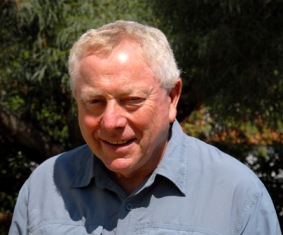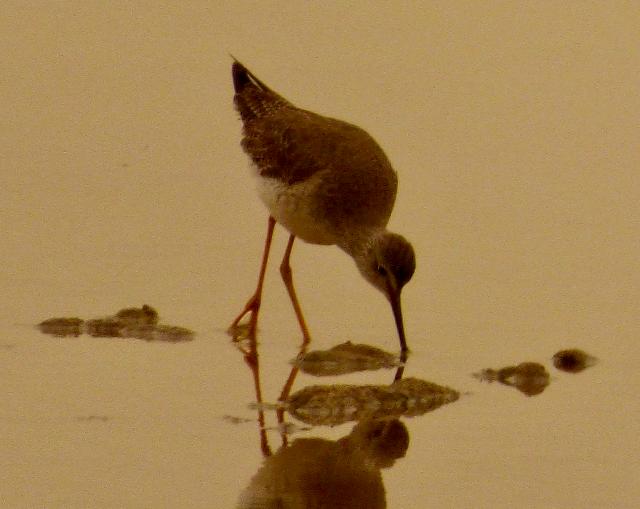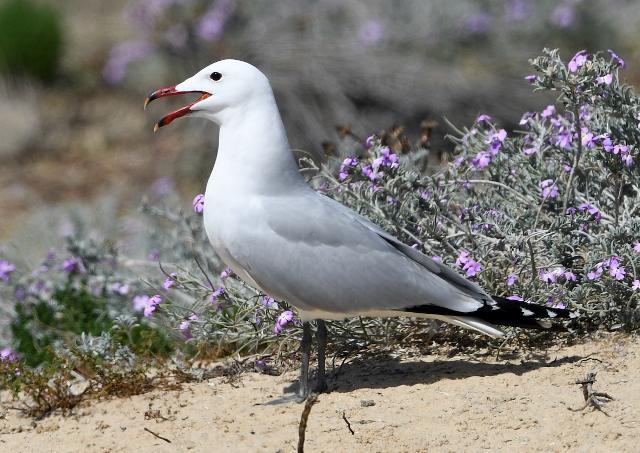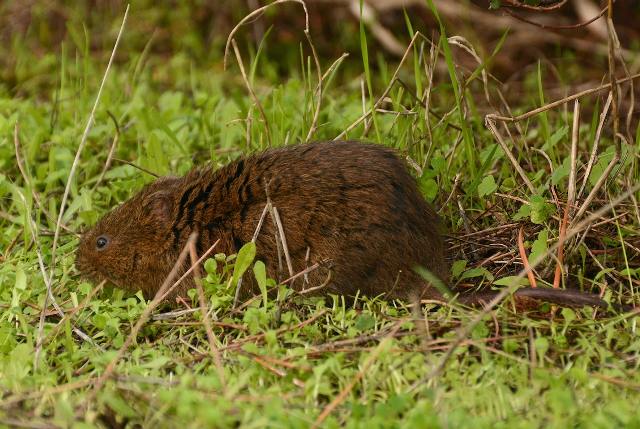Conservation
Articles Out with
Papa Figos Algarve
Books
Out with Papa-figos

Clive Viney - co-author of Algarve Wildlife - the natural year
Papa-figos (which literally translates as fig eater) is the Portuguese name for the Golden Oriole, one of the iconic visiting birds of the Algarve. Clive Viney is the co-author of Algarve Wildlife - the natural year, and now, under the guise of Papa-Figos, chronicles his finds, thoughts and feelings while walking in the Algarve countryside throughout the natural year. Look out for his regular updates, illustrated by his fellow co-author and photographer, Ray Tipper, who has kindly provided some of the photographs that illustrate these articles by clicking through from the links below.
Quintas – 18th March 2022
After a busy week I needed a breath of fresh air but the sky had turned orange. A Sahara dust cloud had caused what some called clay rain or blood rain. As it was overcast there was no need to start too early. John Edge and I arrived at Pontal woods just before nine. At first, the conditions reminded me of forays into the mountains of southern China. Mild, misty, damp, with the smell of recent rain on verdant vegetation. Few people were about, as presumably the threat of further torrential rain had deterred the usual army of recreationalists.
At the large clearing, tracks in fresh mud showed that a singular of Wild Boar had passed through that night. An Iberian Green Woodpecker yaffled and a Great Spotted Woodpecker drummed. Sandhill Snails climbed the soaking vegetation. At Ludo Gate a singing Wren and Cetti’s Warblers greeted us. Two Marsh Harriers quartered the reedbeds but the huge, old salt-producing impoundments on the seaward side were all but devoid of shorebirds. John, a hundred metres down the road was studying through his telescope a lone, medium-sized wader and indicated that I should come. He had found a yellowlegs from America. It was an obliging bird and I took notes and despite the orange gloom was able to take photos with my modest camera. We spent a half an hour with the bird. My field guide confirmed that it was a Lesser Yellowlegs. We punched the air in delight.

Lesser Yellowlegs in orange light!
Later the wind was somewhat taken out of my sails when Ray Tipper, Chairman of the Portuguese Rarities Committee, wrote:
Regarding your Lesser Yellowlegs, it is one of three that have wintered in the Algarve, the other two being at the Salinas de Santa Luzia (which I have seen three times in widely separate pans) and at Alvor. With a total of about 30 records, it is the second most frequently recorded American wader in Mainland Portugal, being surpassed only by Pectoral Sandpiper.
On the apex of a ruin at Quinta de Ludo, John located a pair of Little Owls. We’d seen a Little Owl there before but a pair was good news. A young Dutch birder with state-of-the-art binoculars asked the usual question “Anything about?” and chased off down the road to find the yellowlegs.
In recent years Ludo Lake, for some unexplained reason, had lost its attraction to waterfowl but today there was a spring of Teal and four Little Grebes. Apart from a few more Teal, all duck had now left Esteiro da Maria Nova, where hundreds and hundreds of duck overwinter. Good numbers of Coot and two or three Great Crested Grebes in full breeding attire remained and the margins produced Greater Flamingos, Spoonbills, Little Egrets, Cormorants and a Grey Heron. A nearby impoundment held four Shelduck.
After emptying our coffee flasks and raiding the biscuit tin in the Discovery, we headed off on foot to Lagoa de São Lourenzo at Quinta de Lago, a birding hotspot. A Wryneck called and a pale phase Booted Eagle flew over. Unusually, the fairways were devoid of golfers and at this time of year I was surprised to find Shaggy Inkcaps in the rough. I prefer the descriptive name Lawyer’s Wig. Pat O’Reilly advises in Fascinated by Fungi that when young and white they are edible but do not keep.

Shaggy Inkcaps Coprinus comatus
As would be expected in early March wildflowers were showing well, especially cistus bushes, with two species dominating; Sage-leaved Cistus and Gum Cistus, but unusually the latter species is an all-white form here. I was delighted to find Three-flowered Snowflakes growing abundantly out of sandy soil. A confiding flock of colourful Waxbills was a delight and later another vibrant exotic, a bright yellow Black-headed Weaver showed well.

Three-leaved Snowflake Leucojum trichophyllum
Disappointingly no butterflies but a Buff-tailed Bumblebee serviced the cistus.
Following the rain the water of the lake looked a touch murky and I hoped that there had not been any incompatible run-off from the golf courses. The lake held a good variety of duck but in small numbers – Common Pochard, Shoveler, Gadwall, Mallard and Teal – and we located three Purple Swamphens, a lake speciality. Everywhere, Glossy Ibises have expanded their range and are appearing in ever-increasing numbers. Here they have become habituated and strut around the fairways ignoring golfers and golf balls. Two or three were settled on islands in the lake and I wondered if breeding was a possibility.

By the time we reached the tidal channel, Esteiro do Ancão, the tide was well up not leaving much room for shorebirds but a flock of adult Audouin’s Gulls had settled and allowed us to enjoy their crisp plumage. Interestingly, they were chattering to each other in a very un-gull-like manner; something neither of us had noted before. The barrier islands of the Algarve now boast, perhaps Europe’s largest breeding colony.

We wandered back the way we’d come but lingered at the narrow western end of the lake because this was where a vagrant Allen’s Gallinule, a native of tropical Africa had been photographed. John recalled that it looked something like a brownish-backed Moorhen and for a moment we thought that we’d found the bird skulking through thick reeds but then saw a white broken line along its flanks and an obvious yellow tip to the bill. A Moorhen. Our time though wasn’t wasted, as a migrant Sedge Warbler started rolling its r’s and popped up on a reed head to look at us. Little Bitterns live in the reeds around the lake but are only seen by good fortune. First a female flew out and then another and to cap the performance a superb male came out and watched them go. But the show was not over, as behind the male a Southern Water Vole swam by.

Southern Water Vole - Picture Ray Tipper: Licence enquiry...
A friendly Portuguese couple were birding by the lake and when I mentioned the Lesser Yellowlegs, they were polite but stayed where they were.
Although well past midday it was becoming darker and an end-of-the-world gloominess was settling in but the show was not quite over, as the last fairway gave us a Mistle Thrush, a difficult resident species to find.
A late lunch on Ilha de Faro beckoned, where a thick mist hid the horizon. No Gannets, just one or two Sandwich Terns and loafing gulls. The canecas (tankards of beer) at Restaurante O Rui by the beach were very welcome and my monkfish with prawns was delicious. We tallied up and listed 74 species of birds and we’d missed the rain entirely. And my motto again proved true – it is always worthwhile to get out.
Papa-figos
Tavira
18th March 2022
Back to Papa Figos...